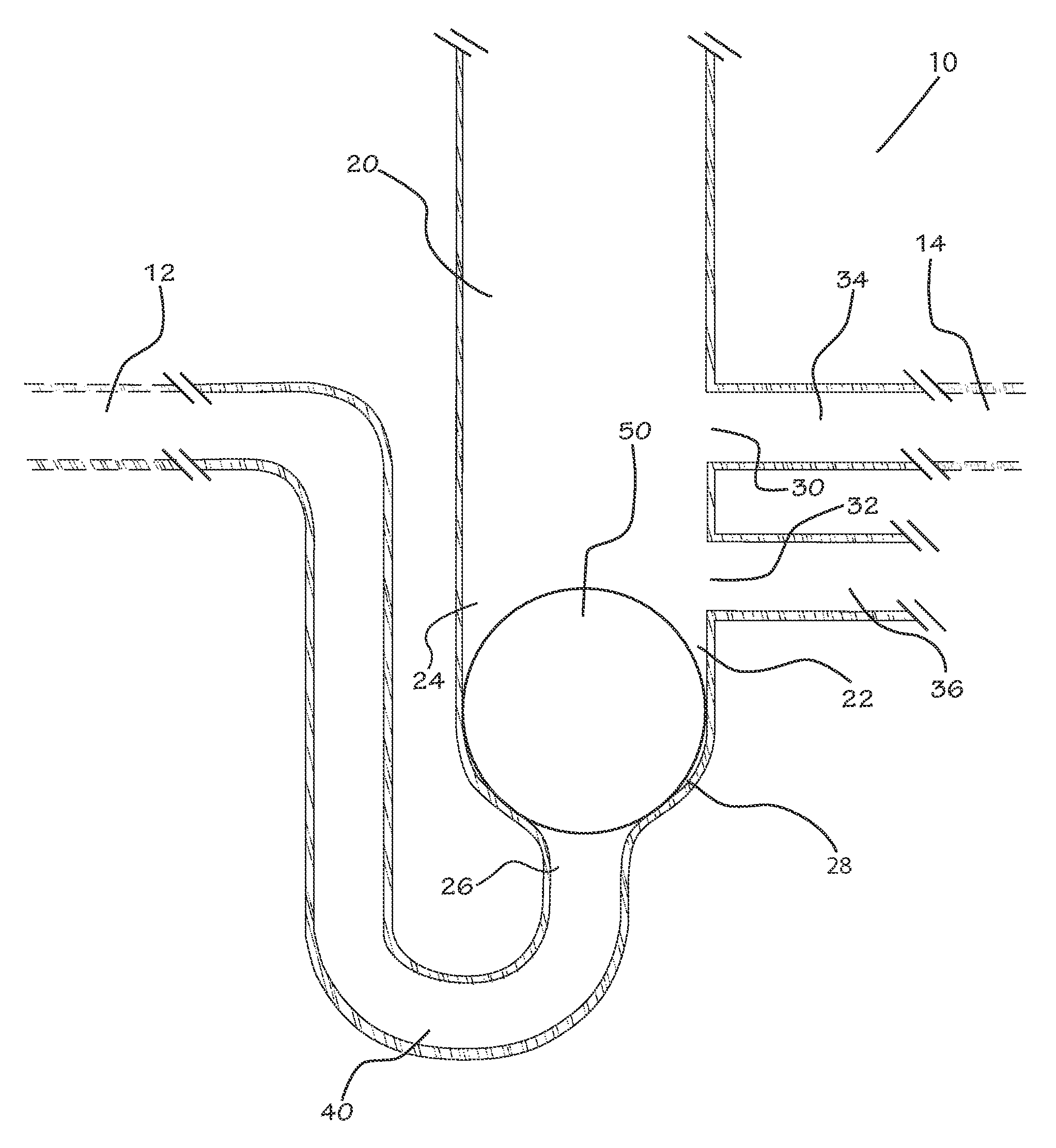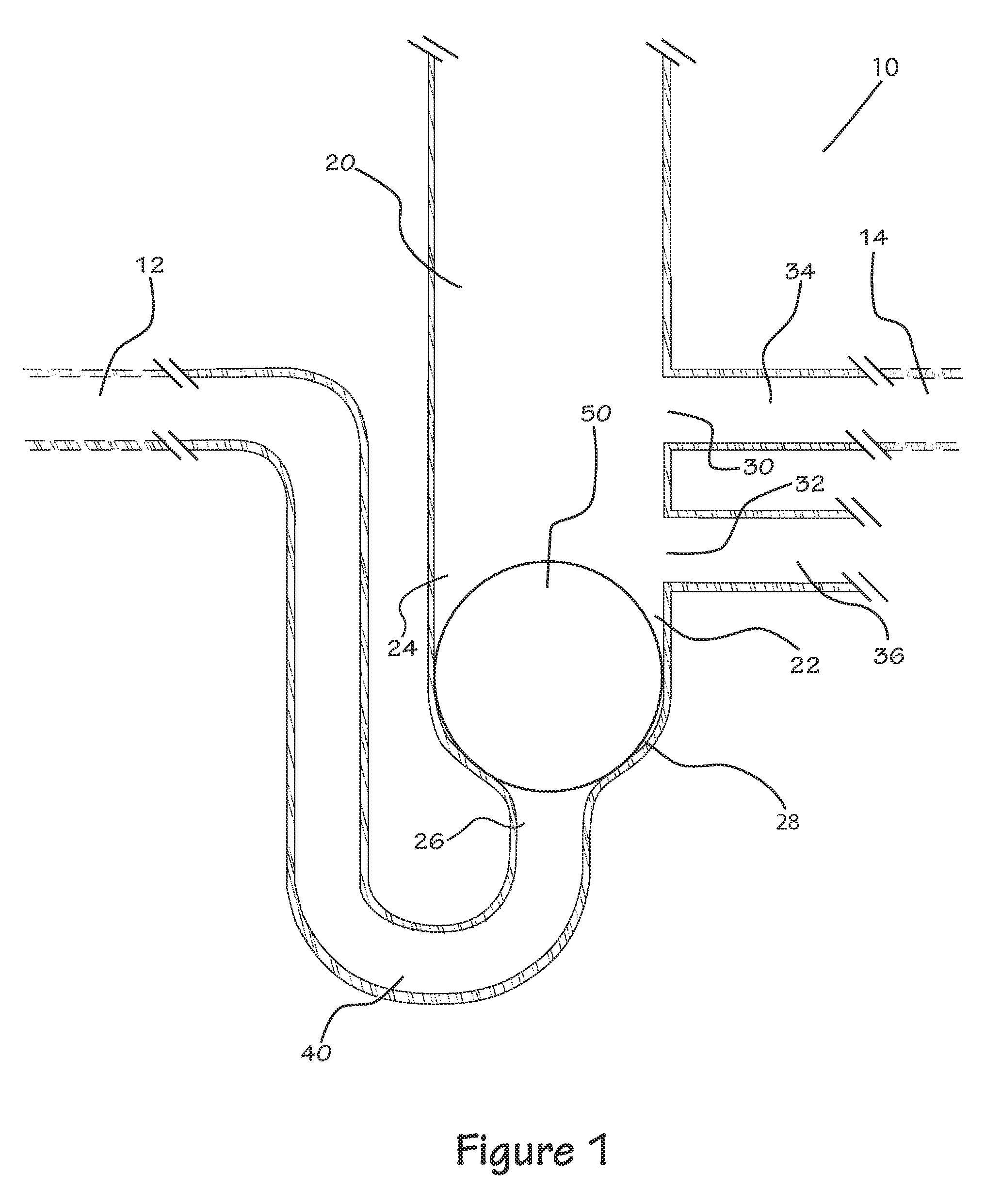Conduit trap and condensation recovery device
a trap and condensation technology, applied in the direction of bends, separation processes, domestic cooling apparatus, etc., can solve the problems of inconvenient if not impossible refilling of traps, inconvenient and difficult refilling of traps, and inability to easily access refrigeration drains
- Summary
- Abstract
- Description
- Claims
- Application Information
AI Technical Summary
Benefits of technology
Problems solved by technology
Method used
Image
Examples
Embodiment Construction
[0028]Referring to the drawings and in particular to FIG. 1, the conduit trap of the present invention is shown generally at 10 as installed in a refrigeration system drainage line 12, and connected to a sewer line 14. As used herein, “conduit” refers to a channel, such as a pipe or tube through which fluid is conveyed. The conduit trap 10 can be generally understood as a hollow body defining a directional fluid path from refrigeration system drainage line 12 to sewer line 14. The hollow body includes an upper conduit 20, which is installed in a substantially vertical position. Disposed on upper conduit is at least one fluid outlet, such as waste outlet 30, condensation collection outlet 32, or both a waste outlet 30 and a condensation collection outlet 32 as illustrated in FIG. 1. As described below in greater detail, when both waste outlet 30 and condensation collection outlet 32 are present, waste outlet 30 is preferably disposed above condensation collection outlet 32. In order ...
PUM
| Property | Measurement | Unit |
|---|---|---|
| diameter | aaaaa | aaaaa |
| outer circumference | aaaaa | aaaaa |
| inner circumference | aaaaa | aaaaa |
Abstract
Description
Claims
Application Information
 Login to View More
Login to View More - R&D
- Intellectual Property
- Life Sciences
- Materials
- Tech Scout
- Unparalleled Data Quality
- Higher Quality Content
- 60% Fewer Hallucinations
Browse by: Latest US Patents, China's latest patents, Technical Efficacy Thesaurus, Application Domain, Technology Topic, Popular Technical Reports.
© 2025 PatSnap. All rights reserved.Legal|Privacy policy|Modern Slavery Act Transparency Statement|Sitemap|About US| Contact US: help@patsnap.com



